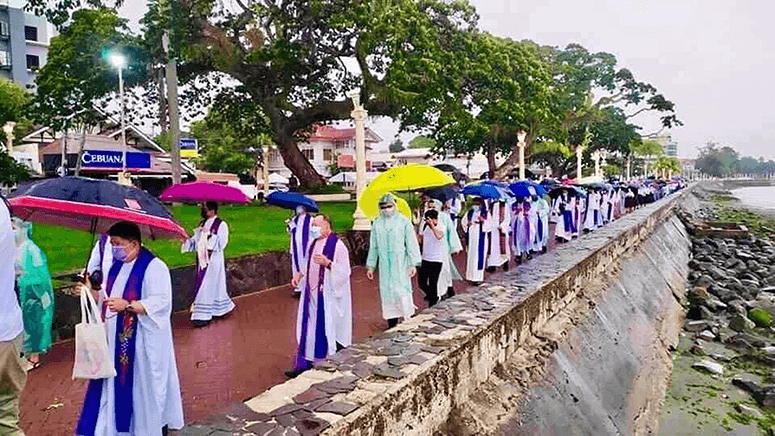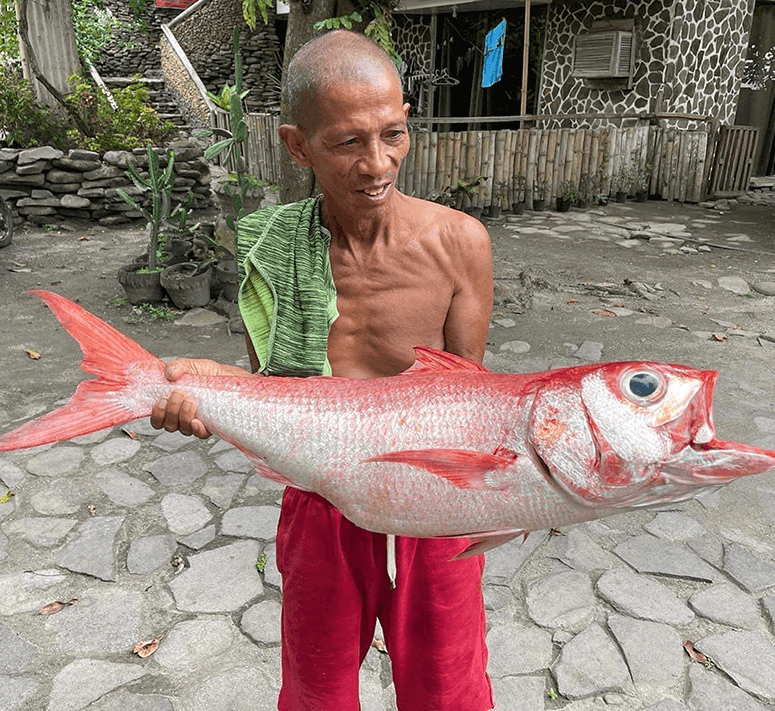Dumaguete, a city shrouded in community protection
Reclamation has been the buzzword in the city of Dumaguete since 2016, starting off with a thousand-square-meter land mass christened “Pantawan” on the northern end of Dumaguete’s main avenue, Rizal Blvd. Perhaps because of the no-fuss reaction of the community to this reclamation, the City Council then decided to embark on a more ambitious reclamation on the south side of the boulevard in 2019, which was labeled “Pantawan 2,” destined to be the size of 10 basketball courts or so, definitely outsizing the meaning of the term “pantawan,” which in the dialect and in Tagalog means “ porch” or “veranda”—in this case, an oversized one.
This time, the community posed an active legal protest, and in March 2019, a Cease and Desist order from the PRA and DENR was sent to the Mayor and his associates for “no approval issued in favor of the City for any reclamation project.” This was blatantly ignored, and the illegal work continued.

Then in July 2021, amid the rising threat of COVID-19, it was announced that a 174-hectare, P23 billion township, a “Smart City,” was set to morph the genteel province into an upscale economic and tourism hub at the expense of sacrificing 85% of its photogenic coastline and devastating at least four marine protected areas. Dumaguete is known to have one of the best marine biodiversity worldwide, where rare sea creatures like trevally, ornate ghost pipefish, frog fish, sea moths, nudibranch, and banded sea krait—apart from the more popular whale sharks, cuttlefish and turtles—enjoy the freedom of a protected environment. This project became known as 174.

This time, a hem and haw were loudly raised by various communities, from scientists to fisherfolk, with the assurance that this so-called “development” would pose destructive results to the environment and local coastal ecosystems. Communities that included Catholic and Presbyterian churches, educational institutions, environmental organizations and scientists did not for once lower the decibels of their protests opposing the unsolicited project (that also skipped the public consultation process, and misleading information on potential impacts on fisherfolk, and the threat of flooding). The protests deftly pointed out that the “monumental ecological disaster” the project would cause far surpassed its economic gains. The community’s voice swelled loud and clear. The surging persistence of COVID-19 was not a deterrent in halting the community’s impetus.

Various factions of the community, in their own way, voiced their respective areas of concern, tirelessly displayed their disgust over the temerity of their local officials to sell off their beloved city, and even ignoring Cease and Desist orders. More than just digital social media posts, physical community action literally took the protests on the road, with early-morning ecumenical walks organized by the Roman Catholic clergy and Protestant pastors, the Pedicab Drivers Association (PDA), fundraising protest parades for environmental advocacy funds, sunrise fluvial parades, and countless late Friday afternoon pop-up protests with candle-bearing protesters of all ages outlining the shorelines, boulevards, plazas and avenues, all garbed in T-shirts, bandanas, face masks, cardboard signs and banners with their sentiments emblazoned on them.

Not stopping at loud protests, untiring efforts were yielded quietly by persons in areas of responsibility that could help halt the threat Dumaguete faced.
How this major reclamation issue ends remains to be seen, but clearly, Dumaguete is a city that has proven its fighting spirit, one that follows proper procedure and protocols, is well- informed, and has a community that leads.
Educating at the grassroots level was taken on by Nancy Estelloso of the People’s Development Council (PDC), Leo Mamicpic of FENO, Frances Yap of Ocean 6, Aidalyn Arabe of Save Mt. Talinis Movement, and Gary Rosales of Kinaiyahan. At the dawning of the disheartening news, it was Rosales who jumpstarted early efforts for signature mobilization and the dissemination of correct information through social media.

Atty. Golda Benjamin’s invaluable contribution was to question the legal proceedings of the City Council and expose the questionable actions of the mayor and his councilors, even making clear the looming presence of China through its local partner, E.M. Cuerpo. All these she explained to the public in layman’s terms.

A local artist and animator, Ramon del Prado and his wife Meryl, through their animated characters, Miming and Friends, promoted environmental awareness in English, Tagalog and Bisaya, as seen in an episode starring a fish named Tonton.

Musician/actor Hope Tinambacan’s information drive via satirical TikTok videos were indispensable to the cause.
Louella Dolar, an Outstanding Sillimanian Awardee marine biologist who now runs the Tropical Marine Research and Conservation in San Diego, California, underscored the impact through a talk on the Learning Event Series hosted by the local Lions and Rotary Clubs on the 174 Dumaguete Reclamation Project.

The extent of the City Council’s misinformation arose when photos and videos of the existence of lush coral reefs and marine biodiversity shown on a television news program were negated and denied by Dumaguete local officials. The reaction of the local snorkelers and divers was to head to underwater sites, sending more photos and videos—irrefutable proof of Dumaguete marine life—to the show’s host, Karen Davila. And as a punchline, a local fisherman publicized his catch: a meter-long ruby snapper! The community’s effort paid off with the halting of Project 174, which is hopefully a bygone.

However, the formal and legal pleas to halt all Pantawan 2 have been left unanswered, and the work prospers with the landfilling of still an additional marine area of 1.9 hectares. As with Project 174 and Pantawan 2, the newly reclaimed area, which was named Pantawan 3, started without the requisite permits and approvals from PRA and DENR Regional Office 7.
PRA’s confirmation of non-receipt of application and DENR’s confirmation of non- issuance of an Environmental Compliance Certificate (ECC) and Area Clearance became the bases of filing graft and corruption cases against Mayor Remollo and several present and past city councilors at the Ombudsman Visayas, as the community stays vigilant, the earth in its own protest continually exposes sink holes despite the landfill.
How this major reclamation issue ends remains to be seen, but clearly, Dumaguete is a city that has proven its fighting spirit, one that follows proper procedure and protocols, is well- informed, and has a community that leads. Recognizing one’s ownership means embracing one’s own culture, a touchstone, a point of reference that is central to protecting one’s sense of identity. On that alone, the impending outcome of the Dumaguete reclamation issue can hopefully be discerned as belonging to the community, and not to just anyone in power.


